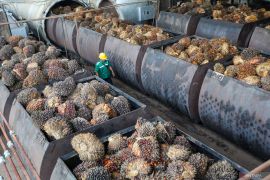"Chinese industries that have the potential to be relocated to Indonesia include the automotive sector, electronics, crude palm oil (CPO) and coal processing industries, pulp/paper and cacao processing industries," Sukamandani said in a press release here on Saturday.
Sukamdani who is the chairman of the Indonesia-China Cultural, Social and Economic Cooperation Institute, hoped a commitment on the relocation of Chinese industry to Indonesia would be made by Chinese Prime Minister Wen Jiabao during his visit to Indonesia on April 29-30, 2011.
He said the relocation of Chinese industries to Indonesia was expected to meet the domestic need of China for goods with added value from Indonesia, while at the same time it would also serve as a place for Chinese companies to produce commodities for export to other potential markets.
Data at the Indonesian Trade Ministry showed that Indonesia`s non-oil commodity exports to China in 2010 stood at US$14.1 billion, or an increase by 58 percent if compared with that in 2009. Its non-oil imports at the same time were recorded at US$19.7 billion in 2010, or an increase by 46 percent from that in the previous year.
Indonesia`s trade surplus with China declined by US3.6 billion from 2008 to US$0.9 dollars in 2010. It was caused by the drop of Indonesia`s oil and gas exports to China from US$3.8 billion in 2008 to only US$0.7 billion in 2010.
He said that the since the imposition of the ASEAN-China Free Trade Area in January 2010, there had been a downward trend in Indonesia`s export market in China from 52 percent in 2009 to 41 percent in 2010.
Although the volumes of Indonesia`s industrial product exports were bigger than those of its imports from China, the added values of Indonesia`s export products were smaller than those of its imports so that Indonesia still suffered from a trade deficit in the industrial sector.
"This needs a common attention from both Indonesian and Chinese business players as well as from Jakarta and Beijing," Sukamdani said.
Sukamdani, who played an important role in the restoration of Indonesia-China relations in the 1980s, said that China and ASEAN were huge markets.
"China has a population of 1.3 billion while ASEAN has 500 million. As a whole, China and ASEAN are huge markets which account for one-third of the world`s," he said.(*)
Editor: Aditia Maruli Radja
Copyright © ANTARA 2011











